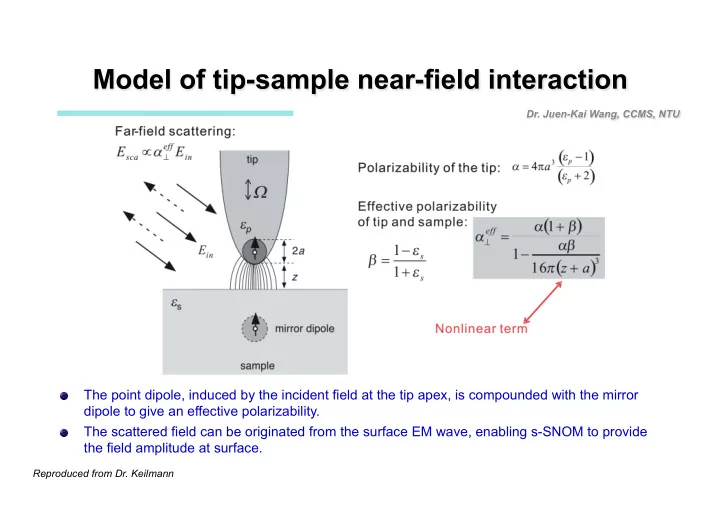

The point dipole, induced by the incident field at the tip apex, is compounded with the mirror � dipole to give an effective polarizability. The scattered field can be originated from the surface EM wave, enabling s-SNOM to provide � the field amplitude at surface. Reproduced from Dr. Keilmann
The interferometric setup measures amplitude and phase of the scattered radiation. � A heterodyne detection scheme is adopted to facilitate the detection of amplitude and phase. � The cross term is amplified by the reference beam. � The higher harmonic term is recorded to extract the near-field signal based on the nonlinear dependence of � the effective polarizability on the tip-sample sample R. Hillenbrand and F. Keilmann, Phys. Rev. Lett. 85 , 3029 (2000).
The s -SNOM achieves ~5 nm resolution, suitable for the near-field studies of plasmonics. �
200 nm Ag film Hole diameter: 150 nm l ex = 532 nm Through Fourier transform, the obtained k -space image exhibits one large circle and two center- � shifted small circles and does not agree with the one obtained with FDTD method. Y.-C. Chang et al., Opt. Exp. 16, 740 (2008).
Nanohole-induced and tip-induced surface plasmon waves � Both waves contribute to the detected scattering radiation of s -SNOM. � Y.-C. Chang et al., Opt. Exp. 16, 740 (2008).
200 nm Ag film Hole diameter: 150 nm l ex = 532 nm The s-SNOM image without the 2 k SPW circle matches with the image calculated without the tip. � Y.-C. Chang et al., Opt. Exp. 16, 740 (2008).
Recommend
More recommend